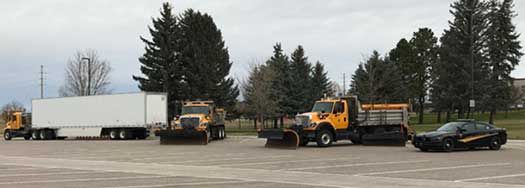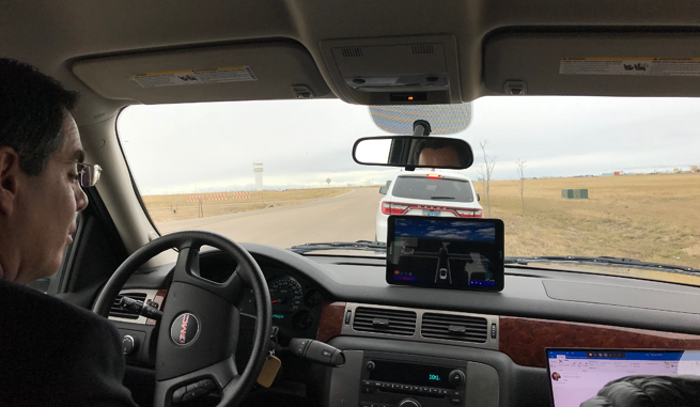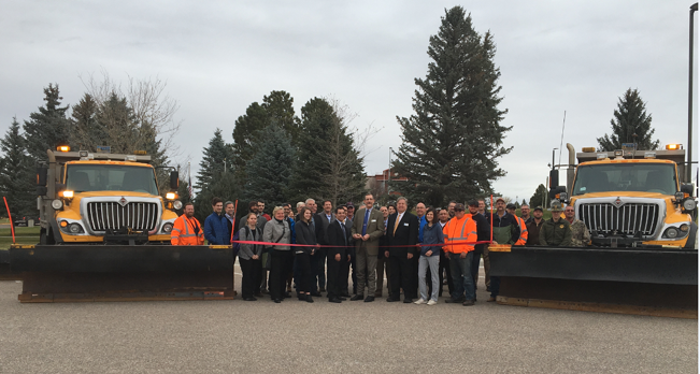The Wyoming Department of Transportation (WYDOT) has conducted an Operational Capability Showcase to demonstrate its recent developments as part of the US Department of Transportation’s (USDOT) Connected Vehicle Pilot program.
Attended by the media, members of the Wyoming Trucking Association, WYDOT pilot partners, other interested stakeholders and USDOT representatives, the showcase was an opportunity for the agency to share the recent progress and intent of the WYDOT Connected Vehicle Pilot and its value to travelers on I-80 in southern Wyoming. The CV Pilot team’s presentation described the project’s background, impetus, overall system capabilities and next steps for deployment. This will include information from connected vehicles that will be integrated with data from other sources at the WYDOT Transportation Management Center (TMC), providing timelier and increased situational awareness to benefit all travelers on the 402 miles (647km) of I-80.

Attendees were also invited to participate in on-road demonstrations that took place along I-80 and at the Archer Complex. Two WYDOT snowplows, a Wyoming Highway Patrol vehicle, and a tractor-trailer unit equipped with connected vehicle technology were available for participants to see first hand the type of equipment that will be deployed. There were on-road demonstrations of several pilot applications, including:
- Forward collision warning, which works using Vehicle-to-Vehicle (V2V) communications. Depending on the situation, a driver could receive a warning of an impending crash with another equipped vehicle, either stopped ahead or moving in the same lane ahead. This application is particularly important for safety along I-80 when snowplows are moving slower than the following traffic and in low-visibility conditions;
- Distress notification, which uses V2V and vehicle-to-infrastructure (V2I) communication to warn drivers and alert the TMC operators of a distressed vehicle. Using V2V communications, a vehicle can broadcast or relay a distressed vehicle notification to other vehicles within a specific area. Using V2I communication, a vehicle can broadcast data that is received by a roadside unit (RSU), which then transmits the information to the TMC, where it is processed and re-transmitted, providing information to travelers near the stricken vehicle as well as alerts for emergency personnel. The relay feature is a means to augment portions of I-80 that are not covered by RSUs;
- I2V (infrastructure-to-vehicle) situational awareness application, which compiles important traveler information such as weather alerts, speed restrictions and vehicle restrictions at the TMC and provides it direct to drivers of connected vehicles using V2I and satellite communications. During on-road demonstrations, variable speed limit (VSL) information and snow conditions were delivered to vehicles in traveler information messages (TIMs) that are compiled at the TMC and sent over satellite communication and to specific RSUs depending on the content. Satellite communication is used to cost-effectively augment RSU coverage of the I-80.

The next step for the Wyoming pilot is the operational phase in which 75 RSUs will be deployed at select locations on the I-80 corridor and approximately 400 vehicles will be equipped with CV technology, including WYDOT snowplows, Wyoming Highway patrols, and heavy-duty trucks from pilot partners. Data will be collected for 12 months to support the WYDOT team’s own evaluation and that of the USDOT, which is conducting an independent evaluation to assess the pilot’s benefit/value and how well it attains its goals.





